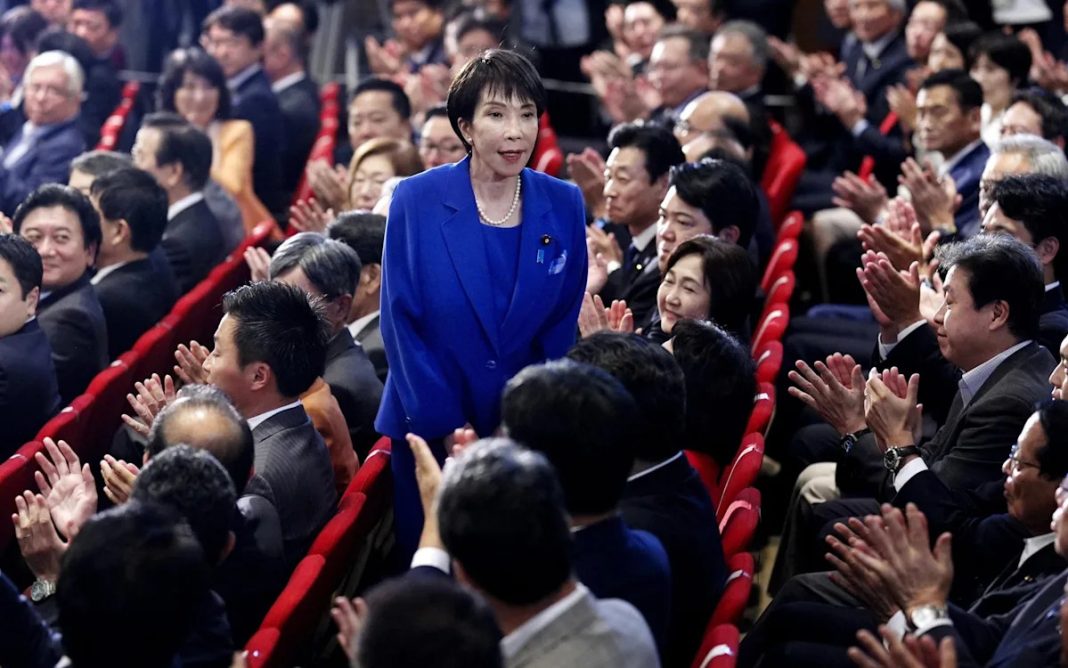Japan is set for its first female prime minister after Sanae Takaichi was elected leader of the governing Liberal Democratic Party (LDP) in Tokyo on Saturday.
A popular nationalist known for taking a hard line on China, 64-year-old Mrs Takaichi decisively won a run-off vote against the more centrist Shinjiro Koizumi, underlining a broader shift to the Right in Japanese politics.
Widely seen as the successor of Shinzo Abe, the former prime minister assassinated while campaigning for election in July 2022, Mrs Takaichi has repeatedly described herself as Japan’s Margaret Thatcher.
Mrs Takaichi, who was famously a drummer in a heavy metal band in university, softened her tone during the election campaign but is now likely to shift the LDP to the Right.
She is expected to move quickly to strengthen national defence and take measures to ensure economic security. She has also indicated that she will push back against US tariffs if they become “unfair” on Japan.
Mrs Takaichi has also spoken out against crime committed by foreigners and the negative impact that immigration is having on the nation. One of her first acts is likely to be legislation to impose new restrictions on foreign nationals purchasing property.
She has in the past visited Tokyo’s Yasukuni Shrine, where the souls of the nation’s war dead are revered as “gods”. The shrine is controversial, however, as it also enshrines 14 Class A war criminals executed after the Second World War. If Mrs Takaichi visits the shrine as prime minister, it will cause significant strains with China and South Korea.
Sanae Takaichi, center left, on a visit to the Yasukuni Shrine in 2014 – Koji Sasahara/AP
The incoming prime minister faces a host of challenges and there is concern that if she is not able to make tangible progress on improving the lives of ordinary Japanese and rebuilding her party’s fortunes, then her rule might be as brief as that of her predecessor.
Shigeru Ishiba, the moderate outgoing LDP leader and prime minister, lasted in office for one year and three days, struggling with a host of issues that Mrs Takaichi must now overcome.
Mr Ishiba announced last month that he was stepping down after the LDP sank to defeat in July’s general election for the upper house of Japan’s Diet. Traditional LDP supporters shifted their allegiance to a number of emerging far-Right parties.

Mrs Takaichi shakes hands with Shigeru Ishiba, the outgoing prime minister, after winning the LDP leadership election on Saturday – KIM KYUNG-HOON/EPA/Shutterstock
Mrs Takaichi will take the helm of a minority government and has indicated that she is willing to work with far-Right parties such as Sanseito and the Japan Conservative Party to pass legislation.
One of her first tasks will be to unite the disparate factions within the LDP to give it a fighting chance of securing a majority in the next election.
She must also win over an electorate that is tired of rising prices for staple foodstuffs while wages have remained stagnant. Inflation was at 2.7 per cent in August, a shock to citizens of a nation that has effectively experienced no inflation for two decades.
Solutions must also be found to the ongoing problem of an ageing and shrinking population, with the decline in the number of Japanese citizens over the course of 2025 expected to be the steepest since records began in 1968. More than 30 per cent are now aged 65 or older and the working age population has been decreasing for decades.
There have been some initiatives to permit immigration to help solve the labour problem, but the idea of opening the country to foreigners has proved unpopular. Mrs Takaichi is firmly against permitting more foreigners to permanently settle in Japan.
The economy is experiencing significant stresses as a result of US tariffs on imports, with car manufacturers in particular struggling to get to grips with a 15 per cent tariff on imports, up from 2.5 per cent previously.
Japan’s other major concern is over security, with China, North Korea and Russia building closer defence ties in the Asia-Pacific region at a time when questions are being raised about the US commitment.
Donald Trump hinted in his first administration that he would withdraw troops from both South Korea and Japan if the host countries did not pay more for their presence, and Tokyo is concerned that the US president might once again use the security alliance as leverage.
Mrs Takaichi will soon have an opportunity to determine Japan’s relationship with the US going forward as it has been announced that Mr Trump will visit Tokyo for three days from Oct 27.

